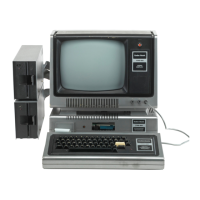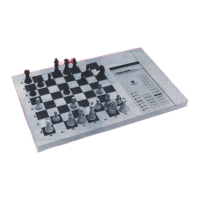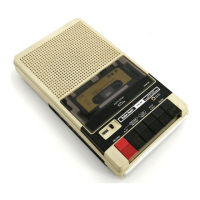Baud
Rate Generator
Directly above the
UART in Figure
4 is
a
block
labeled BRG
(Baud
Rate
Generator). This
section of the interface outputs two clock
signals essential to the
proper operation
of the UART. The two
clock signals (TRANSMIT FREQ & RECEIVE FREQ) determine the
transmit
and
receive
baud rates
of
the serial channel.
A
5.0688
MHz
crystal
is
used
as a timing reference for the
BRG. The BRG
can be
programmed
to
divide
this reference frequency down to the frequen-
cies needed
by
the UART. For both transmit and receive operations,
the UART requires
a
clock
at 16
times the baud
rate desired. The
BRG
transmit and
receive
frequency outputs can be independently
programmed
by
loading
the appropriate constants into its internal
registers. This
feature of the BRG makes it possible
to transmit and
receive
data at different baud rates.
Sense
Switches
Directly below the
UART in Figure 4
is
a
block
labeled
SENSE
SWITCHES.
This section
is
made
up of eight single-pole single-throw
switches
(S1-S8)
which
you use to select the baud rate, bits per
word, parity
(odd or
even),
stop
bits (one,
one-and-one-half, or
two),
and
enable or disable parity
generation.
If you want, you can
ignore these
switches
and under
software
control, directly configure
the Interface for non-standard baud rates, different receive and
transmit frequencies, etc. Table 3
summarizes
the operation of the
sense switches.
Handshake
Latch
The Radio
Shack
RS-232-C
Interface can
control
(with proper
soft-
ware)
the logic state
of two
of the
control
signals on the
Interface
(Request-To-Send and
Data
Terminal Ready).
This
is
accomplished
by
loading
the
Handshake
Latch
with the
appropriate
bit pattern.
Four
of the
interface
signals can be
sensed by the
CPU (Clear-To-
Send. Data
Set Ready,
Carrier Detect, and
Ring Indicator) by
reading
the Modem
Status
Register,
shown
in
Figure
4. The
Handshake
Latch and
Modem
Status Register,
with the
appropriate
software,
allows a
handshake
dialog to
occur
between the
CPU
and the
equipment
connected
to
the RS-232-C
Interface.
12

